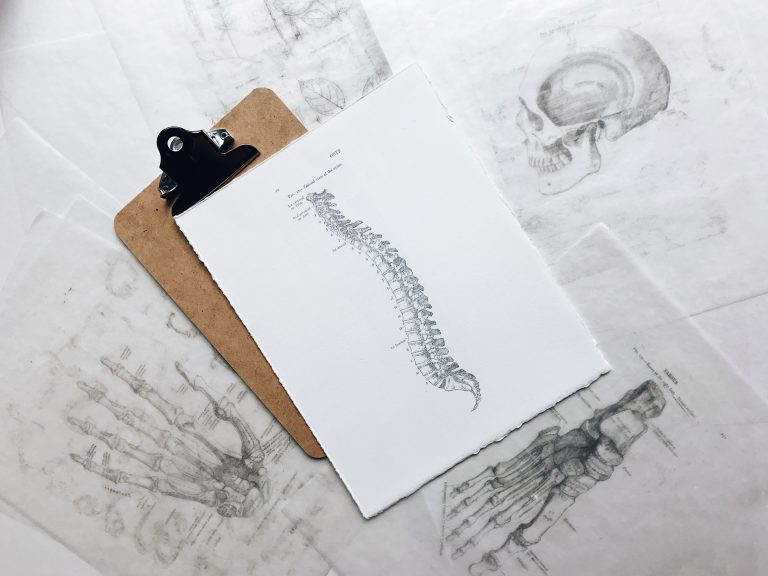Your spinal discs are a very strong and resilient part of your anatomy, but it is possible for them to become fragile over time. This fragility is caused by the development of annular tears, which can lead to conditions such as Leaky Disc Syndrome™, degenerative disc disease, sciatica, and disc herniations. Knowing what the most common signs of annular tears are may help you get a correct diagnosis and appropriate treatment as soon as possible, preventing further problems.
The Makeup of the Spinal Disc
In order to get a better understanding of the common signs of annular tears, it may help to understand the makeup of your spinal discs.
Also known as intervertebral discs, the main function of your spinal discs is to increase your spine’s range of motion and strength. Your spine contains 25 spinal discs in total: 7 cervical, 12 thoracic, 5 lumbar, and 1 sacral. These discs make up 25-33% of your spine’s length.
Each spinal disc works to absorb shock when your spine needs to bear weight as well as prevents your vertebrae from grinding together. The three major components of the spinal discs that work together to do this are the inner nucleus pulposus (NP), outer annulus fibrosus (AF), and cartilaginous endplates that anchor the spinal discs to adjacent vertebrae.
Nucleus Pulposus
The nucleus pulposus is a gel-like structure in the center of your spinal discs and it’s this structure that provides most of your spine’s flexibility and strength. This flexibility and strength is owed to the NP’s make up of 66-86% water and type II collagen and proteoglycans. The proteoglycans in the NP also include aggrecan and versican, both of which bind to hyaluronic acid in order to help retain water. Aggrecan also helps in retaining the water held in the NP. This is an important function because water retention helps the NP absorb shock and provide flexibility.
Annulus Fibrosus
The annulus fibrosus is a ring-shaped disc that surrounds the nucleus pulposus. It’s made up of between 15-25 stacked sheets of fibrous connective tissue, known as lamellae. This fibrous tissue is made up of collagen, proteoglycans, glycoproteins, elastic fibers, and connective tissue cells.
The collagen that makes up each lamella is uniformly oriented on a plane that differs in orientation to the adjacent lamella. This is called “radial-ply” and makes alternate lamella parallel to each other and provides more strength than if all the lamella had a longitudinal placement. In fact, this construction is mimicked in the production of car tires because of its strength. The lamellae are also interconnected by translamellar bridges. Translamellar bridges also assist in providing strength and flexibility.
While the AF is the outer portion of the spinal disc, the AF itself contains inner and outer layers. These layers are differentiated by the collagen composition of each section. Both are mostly made up of collagen but the outer part of the AF is made of mostly type I collagen while the inner part is mostly type II collagen. The amount of type I and type II collagen changes gradually from the inner to the outermost layers of the annulus fibrosus. As the distance from the nucleus pulposus increases, the amount of type II collagen decreases, while the amount of type I increases.
The “shock-absorbing” feature of spinal discs distributes forces throughout the spine to reduce the load on any one vertebra, thus reducing the risk of fracture and degenerative changes. This is why it’s important to understand the common signs of annular tears and address these tears as soon as possible.

What Are Annular Tears?
Of course, in order to understand the common signs of annular tears, it’s necessary to understand what annular tears are and how they develop.
Annular tears are literal tears in one or more layers of the annulus fibrosus. They usually occur in the posterior of the AF because this area has a larger amount of vertically oriented fibers, making it weaker than other parts of the AF.
Most adults have annular tears in their spinal discs and don’t even know it, because these tears are asymptomatic most of the time. If identified tears are asymptomatic, they are usually found during imaging that is done for other reasons.
If annular tears cause symptoms, it can lead to pain confined to the area around the tear or radicular symptoms caused by irritation of the nerve roots near the tear. If the annular tear occurs suddenly the pain felt may be more acute, while if the tear develops slowly over time, the pain may feel chronic. If the annular tear causes the nucleus pulposus to leak out of the disc, the radicular symptoms caused can include pain, paresthesia, and weakness. The intensity of the common signs of annular tears depends on the degree to which the nerve is irritated.
Leaky Disc Syndrome™
In the previous paragraph, we mentioned that annular tears sometimes allow the nucleus pulposus to leak out of the spinal disc. This is known as Leaky Disc Syndrome™ and it’s a term that was coined by Dr. Kevin Pauza.
Leaky Disc Syndrome™ occurs when the nucleus pulposus leaks out of the spinal disc and irritates or inflames the surrounding spinal nerve roots. This irritation and inflammation can lead to lower back, leg, neck, or arm pain that is usually attributed to a compressed nerve. Physically compressed nerves are sometimes the cause of these symptoms, but it is Dr. Kevin Pauza and the Discseel® Procedure team’s belief that most pain and numbness experienced in the extremities is caused by annular tears that have allowed the nucleus pulposus to come into contact with spinal nerve roots.
While the nucleus pulposus is a natural part of our bodies, it’s meant to stay within the spinal disc. Because of this, the body treats it as a foreign substance when it leaks out of the spinal disc and reacts with inflammation and irritation, leading to the pain associated with the common signs of annular tears.
Common Signs of Annular Tears
Now that you know everything you need to know about the spinal disc, annular tears, and Leaky Disc Syndrome™, let’s talk about the common signs of annular tears.
Most adults have asymptomatic annular tears and because of this, they’ll never realize that they have torn spinal discs. However, if you have annular tears that have become symptomatic, you may feel neck or back pain. The location of your pain will depend on the location of the torn spinal disc. If the torn spinal disc is located in your lower back (the lumbar spine), your pain may radiate into your buttocks or down leg. If this sounds similar to sciatica, it’s because Leaky Disc Syndrome™ can cause sciatica pain! If the spinal nerve root that becomes irritated by the leaking nucleus pulposus is the sciatic nerve root, this will cause sciatica symptoms.
You may also experience pain that becomes more severe when you perform certain motions such as sitting down, bending or twisting. The pain you feel may be alleviated when you switch positions or lay down, or when you’re exercising. Pain caused by annular tears can also be either sporadic or constant.
Because annular tears most commonly occur in the lumbar spine, we feel that it’s helpful to list some of the most common signs of annular tears in correlation with lumbar discs.
- L1/ L2: Pain, numbness, or loss of sensation in the thigh or groin area
- L2/ L3: Diminished strength in the hip flexor; pain, numbness, or loss of sensation in the thighs
- L3/ L4: Diminished patellar reflex; pain or numbness in the thighs; quadriceps weakness
- L4/ L5: Numbness or loss of feeling in the feet; diminished patellar tendon reflex; quadriceps weakness; pain in the legs
- L5/ L6: Numbness or loss of sensation in the feet or toes; weakness in the hips and legs

How are Annular Tears Diagnosed?
Unfortunately, the only way to be sure that you have an annular tear is by undergoing either a discogram or an annulogram. Both are imaging procedures conducted with the help of live x-ray guidance in which dye is injected into the spinal discs. The goal of both the discogram and the annulogram is to detect torn discs.
However, a large difference between these tests involves pressurization of the spinal disc. During discograms, the spinal disc is pressurized to determine whether or not this causes pain. Annulograms do not require the pressurization of spinal discs. In the annulogram, if the injected dye flows through the disc, that tells the physician that the disc is torn.
It should be noted that other tests, like MRIs or CT scans can’t detect annular tears.
The Discseel® Procedure
Your spinal discs play a vital role in protecting your spine and are incredibly resilient, but it’s possible for them to weaken over time. If you don’t avoid activities that may lead to the development of annular tears, your spinal discs may begin to break down and degenerate.
This may then lead to Leaky Disc Syndrome™, vertebrae rubbing together, and less resiliency when strain is put on your spine. While the most common signs of annular tears may vary, getting a correct diagnosis and appropriate treatment will prevent further issues from occurring and restore your spine’s integrity and functionality.
This can be done with Dr. Pauza’s Discseel® Procedure, which is a non-surgical, minimally invasive procedure that treats annular tears. If you’re ready to get long-term relief from your back or neck pain, apply for the Discseel® Procedure today and find out if you’re a candidate.

